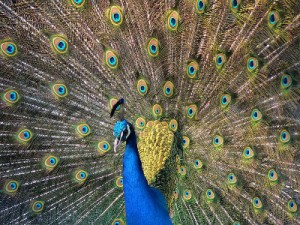 Following on Wirt’s 1991 treatise, On the Role of Males, that suggests that sexual caste is a meta-trait that operates at a level above simple, beanbag “selfish genetics” by supporting eliminating genetic defects through Y chromosomes (unmasked heterozygous alleles) combined with combative behavior, we can easily ask what other traits elevate female choices for mammals because, by being selective, female choice accelerates evolution even more. And, for humankind, we can ask the most interesting question: what drives women to desire men?
Following on Wirt’s 1991 treatise, On the Role of Males, that suggests that sexual caste is a meta-trait that operates at a level above simple, beanbag “selfish genetics” by supporting eliminating genetic defects through Y chromosomes (unmasked heterozygous alleles) combined with combative behavior, we can easily ask what other traits elevate female choices for mammals because, by being selective, female choice accelerates evolution even more. And, for humankind, we can ask the most interesting question: what drives women to desire men?
From Geoffrey Miller’s Aesthetic fitness: How sexual selection shaped artistic virtuosity as a fitness indicator and aesthetic preferences as mate choice criteria:
… Read the restFrom 1871 until the turn of the 20th century, Darwinian aesthetics was an active area of theorizing. Darwin (1871) himself viewed the human visual arts as an outgrowth of an instinct for body ornamentation. He pointed out that males in most cultures indulge in much more self-adornment than females, as predicted by his sexual selection theory. (He understood that men of his own culture ornamented themselves with country estates and colonial treasures rather than tattoos and penis sheaths). Herbert Spencer argued that sexual selection produced most of the beauty in nature and culture, while Max Nordau posited a neurophysiological link between reproductive urges and artistic creativity, which Sigmund Freud appropriated in this theory of art as sublimated sexuality. Friedrich Nietzsche developed an especially intriguing and little-appreciated biological aesthetics in The Will to Power, in the section titled ‘The will to power as art’. Nietzsche (1883-1888/1968, p. 421) also accepted a sexual display function for the visual arts, writing “Artists, if they are any good, are (physically as well) strong, full of surplus energy, powerful animals, sensual; without a certain overheating of the sexual system a Raphael is unthinkable.”